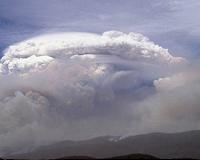| . |  |
. |
Boulder, Colo. (UPI) Oct 22, 2010 The world's plants play a bigger role in cleansing the Earth's atmosphere of common air-polluting chemicals than previously thought, U.S. researchers say. Scientists at the National Center for Atmospheric Research in Boulder, Colo., used observations, gene studies and computer modeling to show that deciduous plants absorb about a third more of a class of air-polluting chemicals known as oxygenated volatile organic compounds than previously believed, ScienceDaily.com reported Friday. These compounds form in the atmosphere from hydrocarbons and other chemicals emitted from both natural sources and human activities, and can have long-term impacts on the environment and human health, researchers say. "Plants clean our air to a greater extent than we had realized," research center scientist Thomas Karl, the lead author, says. "They actively consume certain types of air pollution." By measuring levels of the atmospheric compounds in a number of ecosystems in the United States and other countries, the researchers found that deciduous plants appear to be absorbing them at an unexpectedly fast rate -- as much as four times more rapidly than previously estimated. "This really transforms our understanding of some fundamental processes taking place in our atmosphere," Karl says.
earlier related report The funds will help for food delivery, water purification and pumping in Amazonas state, where some communities have been cut off by the drop in river levels. The Brazilian air force has already distributed 500 tonnes of food and supplies to some areas which are normally dependent on water transport. Officials said the level of the Amazon River at Manaus, the regional capital, is near its lowest level since 1963. Scientists say it appears Brazil is headed for its worst drought since that year. Final data to be collected up to October were expected to confirm that. The withering of the Amazon has produced unusual scenes of children playing football in the dried-up riverbed of a tributary, the Quarenta, that crosses Manaus. Remote towns upstream that rely on water traffic as their main link to civilization have been cut off as their own tributary has all but disappeared. The rainy season in the area normally begins in November.
Share This Article With Planet Earth
Related Links The Air We Breathe at TerraDaily.com
 The Fire-Breathing Dragon Of Clouds
The Fire-Breathing Dragon Of CloudsLangley VA (SPX) Oct 22, 2010 A cumulonimbus without the "pyre" part is imposing enough - a massive, anvil-shaped tower of power reaching five miles (8 km) high, hurling thunderbolts, wind and rain. Add smoke and fire to the mix and you have pyrocumulonimbus, an explosive storm cloud actually created by the smoke and heat from fire, and which can ravage tens of thousands of acres. And in the process, "pyroCb" storms fu ... read more |
|
| The content herein, unless otherwise known to be public domain, are Copyright 1995-2010 - SpaceDaily. AFP and UPI Wire Stories are copyright Agence France-Presse and United Press International. ESA Portal Reports are copyright European Space Agency. All NASA sourced material is public domain. Additional copyrights may apply in whole or part to other bona fide parties. Advertising does not imply endorsement,agreement or approval of any opinions, statements or information provided by SpaceDaily on any Web page published or hosted by SpaceDaily. Privacy Statement |